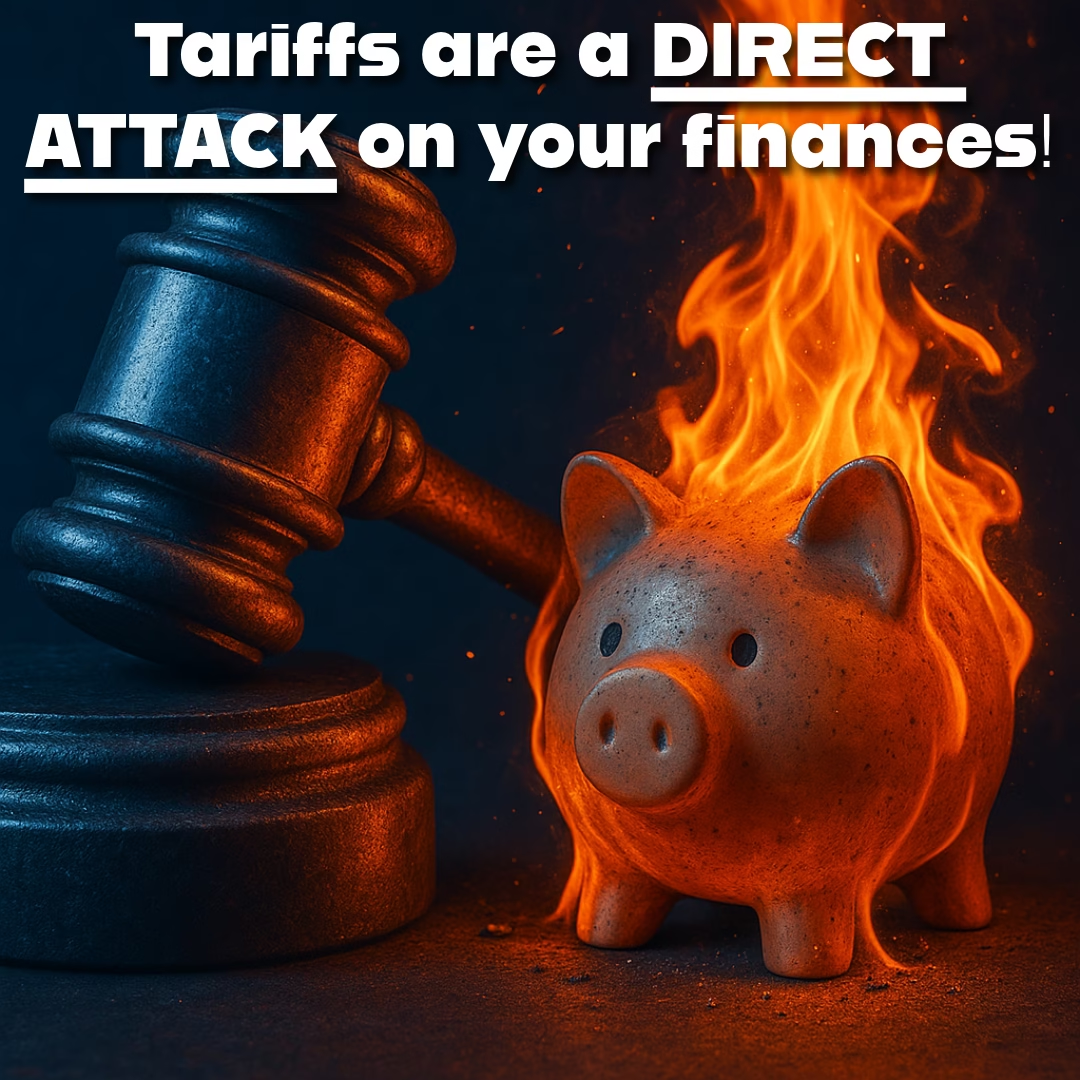And How to Protect Yourself.
Tariffs can be a disaster when you’re working hard to reach financial freedom and every dollar matters. You’re budgeting, investing smart, and cutting out the waste. But what should you do when outside forces (like tariffs) quietly raise your everyday costs—even when you didn’t do anything wrong?
In this article, we’ll explain how tariffs work, how they hit your wallet, and how you can protect yourself using simple finance strategies rooted in the underconsumption core—a powerful approach to wealth building that emphasizes saving, spending with intention, and avoiding lifestyle creep.
What Is a Tariff?
A tariff is a tax that the government places on imported goods. When a product is brought into the U.S. from another country, the U.S. government might charge an extra fee—basically a tax—on it. That fee is paid by the importer, not the foreign country.
But here’s the catch: businesses pass that cost on to you, the consumer.
So if there’s a tariff on steel, your next car might cost more. If there’s a tariff on electronics, your next phone or laptop might be more expensive. And if tariffs hit food or clothing? You feel that every time you go to Walmart or Target.
How Tariffs Threaten Your Path to Financial Freedom
Let’s get real—tariffs are a stealth tax on everyday people.
If you’re budgeting, tracking expenses, and living below your means, tariffs make that harder. They push prices higher, forcing you to either spend more or go without. Here’s how that affects your journey:
1. Higher Prices on Essentials
Tariffs hit imported goods, and we import a lot—from groceries to electronics to clothing. As costs rise, it chips away at your ability to save and invest.
- Food prices go up when tariffs affect imported crops or ingredients.
- Home improvement costs increase when tariffs hit materials like lumber or steel.
- Everyday goods like tools, kitchenware, or electronics may cost more due to tariffs on parts or manufacturing in other countries.
2. Budget Pressure
If you’ve built a budget around your current spending, tariffs can quietly wreck your plan. You may notice your regular grocery haul suddenly costs $10 more—or your favorite brand is no longer affordable.
3. Delayed Financial Goals
When more of your money goes toward daily needs, less is left for paying off debt, building your emergency fund, or investing in low-cost index funds like VOO.
The Underconsumption Core: Your Best Defense Against Tariffs
The underconsumption core is a mindset where you intentionally spend less than you earn, not just to save money, but to build long-term wealth. It’s about being okay with “less” now to have more freedom later.
Here’s how you can use this principle to fight back against rising costs from tariffs:
1. Buy Less, But Better
Focus on quality over quantity. Buy durable goods that last. If you need to spend more upfront for something that’ll last longer, it often saves money in the long run.
2. Stock Up When Prices Are Low
If you see essentials on sale (especially non-perishables), stock up before tariffs raise prices even more. Use apps like Too Good To Go to save money on groceries and reduce food waste.
3. Use Substitutes
Switch to locally-made or non-imported alternatives when possible. Farmers markets, local brands, or store-brand items can often beat tariff-inflated prices.
4. Automate and Protect Your Investments
Stay the course with investing. Use low-cost ETFs like VTI or FZROX and avoid panic selling. Long-term investing is your best protection against inflation and rising costs.
Simple Finance Tip: Build a “Tariff Buffer”
Just like an emergency fund, a tariff buffer is a sinking fund for rising prices. Set aside $10–$25/month for price hikes you can’t predict. This tiny buffer protects your monthly budget and keeps you from dipping into savings or swiping your credit card.
Try using a budgeting app like YNAB to set up custom categories for things like price increases or tariffs.
Final Thoughts on Tariffs: Stay Focused, Stay Free
Tariffs aren’t something you can vote on or easily control—but you can protect yourself. Stick to the underconsumption core, keep living below your means, and adjust your strategy to handle price changes before they wreck your budget.
Financial freedom is about control—and staying in control, even when outside forces try to make you spend more.
More Helpful Resources
If you love finding ways to save money and want more tips on achieving financial independence, join our FREE mailing list! We share simple, actionable advice to help you live debt-free, save smarter, and enjoy life without financial stress. Sign up today and take the next step toward a better financial future!
